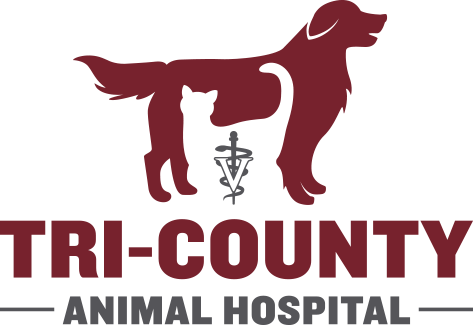Hair Loss without Skin Inflammation: Causes and Treatment
Hair Loss Without Inflammation of The Skin in Dogs – An Overview
- “Alopecia” is the medical term for hair loss
- Non-inflammatory alopecia is a group of uncommon skin disorders, characterized by hair loss that is associated with an abnormal hair growth/shed cycle
- Hormonal and non-hormonal diseases can be associated with non-inflammatory hair loss (alopecia)
- Alopecia X is a non-inflammatory alopecia related to an abnormal hair growth/shed cycle; it has been called by many names previously, including “growth hormone-responsive alopecia,” “castration-responsive alopecia,” and “adrenal hyperplasia-like syndrome”
- “Estrogen,” “progesterone,” and “estradiol” are female hormones; “testosterone” and “androgen” are male hormones
- An “intact” pet is one that has its reproductive organs; an “intact female” has her ovaries and uterus and an “intact male” has his testicles
- A “neutered” pet has had its reproductive organs surgically removed; females commonly are identified as “spayed,” but may be identified as “neutered”; males may be identified as “castrated” or “neutered”
Genetics
- Breed predilections exist for alopecia X; however, the mode of inheritance is unknown
Signalment/Description of Pet
Species
Breed Predilections
- Increased levels of estrogen (known as “hyperestrogenism”) in females and increased levels of androgen (known as “hyperandrogenism”) in males—none
- Alopecia X—miniature poodle and plush-coated breeds, such as the Pomeranian, chow chow, Akita, Samoyed, Keeshonden, Alaskan malamute, and Siberian husky
Mean Age and Range
- Increased levels of estrogen (hyperestrogenism) in females and increased levels of androgen (hyperandrogenism) in males—middle-aged to old, intact dogs
- Alopecia X—range, 1–5 years of age; older dogs may develop alopecia X
Predominant Sex
- Increased levels of estrogen (hyperestrogenism)—primarily intact female or male dogs; male dogs due to testicular cancer producing excessive levels of estrogen
- Increased levels of androgen (hyperandrogenism)—primarily intact males
- Alopecia X—neutered or intact dogs of either sex
Signs/Observed Changes in The Pet
- Overall change in the hair coat—dry or bleached, because hairs are not being replaced; lack of normal shedding
- Male dogs with increased levels of estrogen (hyperestrogenism) may attract other male dogs
- Hair loss (alopecia)—usually generalized and bilaterally symmetrical; involves the trunk, along the sides of the body (known as “truncal alopecia”) and spares the head and lower legs; hair loss is uncommon in dogs with increased levels of androgens (hyperandrogenism)
- Secondary excessively oily or dry scaling of the skin (known as “seborrhea”); itchiness (known as “pruritus”); skin infection characterized by the presence of pus (known as “pyoderma”); hair follicles filled with oil and skin cells (known as “comedones”); inflammation of the outer ear, characterized by an oily discharge (known as “ceruminous otitis externa”); and darkened skin (known as “hyperpigmentation”)—variable
- Enlargement of nipples, mammary glands, vulva (external genitalia of the female), prepuce (fold of skin that covers the penis)—may be associated with increased levels of estrogen (hyperestrogenism)
- Abnormal sized testicles—may be associated with increased levels of estrogen (hyperestrogenism) or increased levels of androgen (hyperadrogenism); however, testicles may be normal in size
- Increase in the number of cells in the tail glands (known as “tail gland hyperplasia”) and increase in the number of cells in the perianal gland (known as “perianal gland hyperplasia”) with localized change in color of the skin due to deposits of melanin (known as “macular melanosis”)
- Signs of generalized disease (known as “systemic signs”), such as increased thirst (known as “polydipsia”), increased urination (known as “polyuria”), or increased appetite (known as “polyphagia”) are NOT present
Causes of Pet’s Hair Loss with No Skin Inflammation
Skin Disorders due to Increased Levels of Estrogen (Hyperestrogenism)–Female
- Estrogen excess or imbalance owing to a condition characterized by the presence of fluid-filled sacs or cysts in the ovaries (cystic ovaries), ovarian tumors (rare), or excess/overdose of estrogen-containing medications
- Pets with normal serum estrogen concentrations may have a increased number of estrogen receptors in the skin
Skin Disorders due to Increased Levels of Estrogen (Hyperestrogenism)–Male Dogs with Testicular Tumors
- Estrogen excess due to a tumor in the testicles, such as Sertoli cell tumor (most common), seminoma, or interstitial cell tumor (rarely)
- Lack of normal descent of one or both testicles into the scrotum, resulting in the testicle(s) being located in the abdomen or inguinal canal (known as “cryptorchidism”) increases the likelihood that affected pets will develop testicular tumors
- Associated with male pseudohermaphrodism in miniature schnauzers; “pseudohermaphrodism” is a condition where the pet has either ovaries or testicles, but has uncertain (ambiguous) external genitalia
Skin Disorder due to Increased Levels of Androgen (Known as “Hyperandrogenism”) Associated with Testicular Tumors
- Androgen-producing testicular tumors (especially interstitial cell tumors) in intact male dogs
Alopecia X
- Hairs fail to cycle normally; an underlying hormonal cause has not been identified
Risk Factors
- Intact male and female dogs are at increased risk for developing testicular tumors and ovarian cysts/tumors, respectively
- Lack of normal descent of one or both testicles into the scrotum, resulting in the testicle(s) being located in the abdomen or inguinal canal (known as “cryptorchidism”) increases the likelihood that affected pets will develop testicular tumors
- Administration of medications containing estrogen
- Alopecia X—breed (miniature poodle and plush-coated breeds, such as the Pomeranian, chow chow, Akita, Samoyed, Keeshonden, Alaskan malamute, and Siberian husky)
